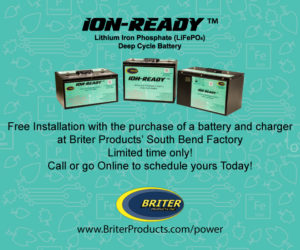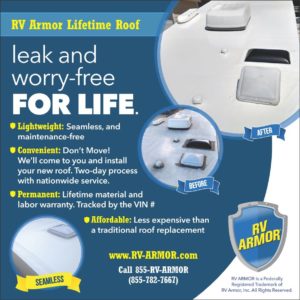No matter how sturdy you think an RV awning is, if high winds buffet the awning at a certain angle, the awning is at risk. If the awning is quickly secured, you have a chance at avoiding problems. But if too much time passes, you may lose your awning. In the process, you may also suffer exterior RV damage.
Tropical storm force winds start 39 mph according to the Saffir–Simpson hurricane wind scale. No matter where you live in the United States, the wind can blow at that pace, so RV awning security is essential.
Some power awnings have wind sensors that will automatically trigger retraction before the wind speed exceeds the awning’s wind rating. Having automatic retraction works well, especially if the wind comes up strong at night, or when you’re not around.
When manual awnings are extended, awning saver clamps and de-flappers can help reduce the whipping of fabric in high winds. An awning tie-down kit can also help keep it secured in high winds.
In addition, heavy rain can cause pooling of water on the awning, which can lead to fabric failure or the collapse of the awnings support structure. Again, the best advice is to stow away your awning during bad weather.
It’s also crucial to properly stow your awning while the RV is underway. Precisely following stowage instructions can help you avoid problems.
After all, your awning is meant to provide shade and protection when you are stopped and want to enjoy the outdoors. During stormy times you likely won’t be outside anyway, so retract or properly secure your awning for safety’s sake.








